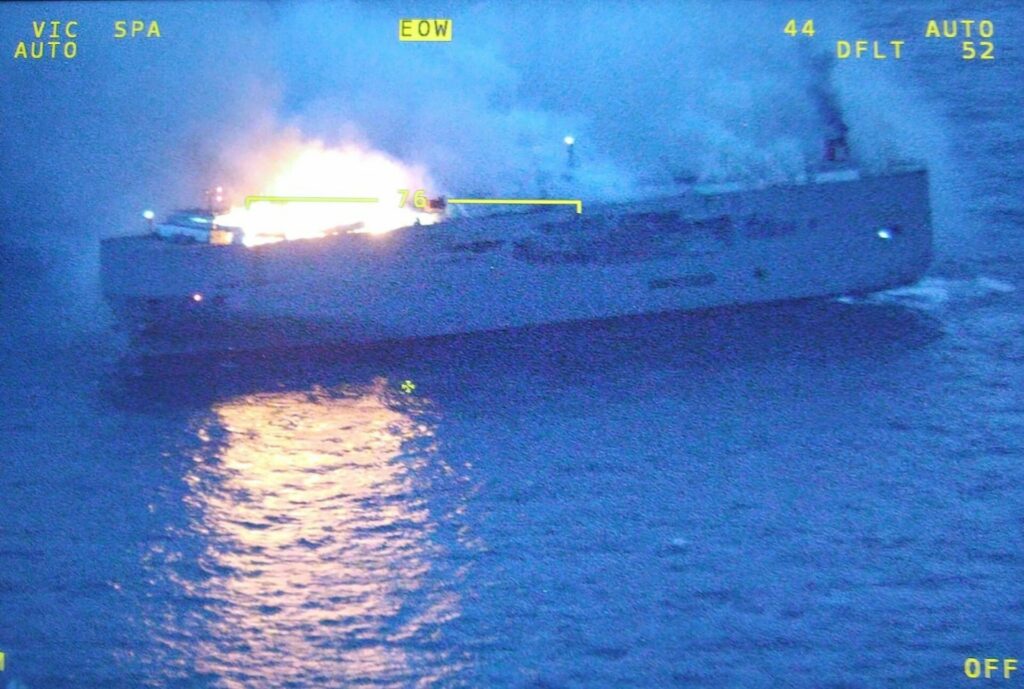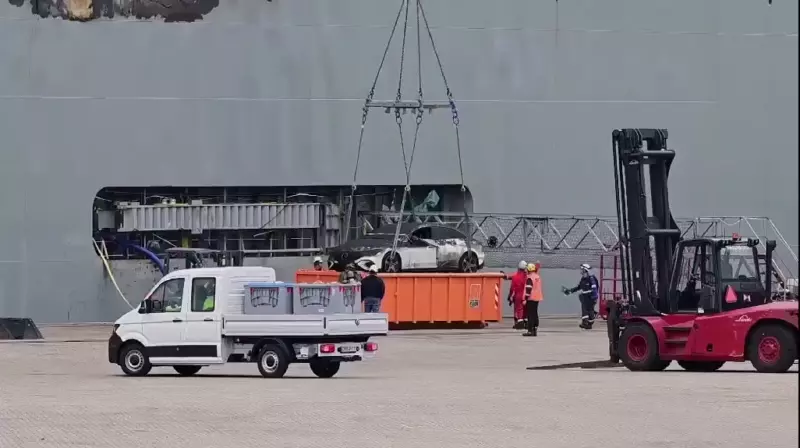Vehicles that were aboard the ill-fated Fremantle Highway have begun to be offloaded as professionals begin the arduous task of recovery.
On the 24th of July, a fire broke out on the vessel, which was on its way from Germany to Egypt with 3,000 cars. The blaze started off the coast of the Netherlands, with one crew member losing their life and several others sustaining injuries.
Initial reports suspected that an EV may have started the blaze. However, speaking to Dutch press, Peter Berdowski, CEO of the Boskalis Salvage Company, later said that at least 1,000 cars seemed to be in good condition and perfectly moveable, including the 500 EVs.
But now, according to video of the recovery efforts, it would appear at least some EVs have indeed been damaged.
Related: The Shipping World Isn’t Ready For The Risk EVs Pose, And Here’s Why
We initially see several Mercedes EQE sedans that have already been offloaded and appear to have made it out unscathed. But one of the EVs has to be towed to the exit before being craned away. The video shows that the EQE in question is badly scorched, with the upper half covered in burn marks. Underneath, we can also observe damage to the undertray as the car is moved through the air.
Although there is no sign of smoke from the vehicle during this process, it is submerged in a water tank. At this point, steam is seen rising from the tank. One of the main difficulties firefighters have with electric vehicles is thermal runaway, whereby a vicious cycle of increasing temperature is triggered, caused by materials reacting within a battery cell.
A practical method to douse such lithium battery fires in EVs is to dump the vehicles into a pit of water. According to an article by the International Association of Fire and Rescue Services, extinguishing a burning Tesla can take as much as 40,000 gallons of water.
While the EQE Sedan is unlikely to have caused the blaze, it appears to have posed enough of a risk that experts on-site opted to submerge the vehicle. The steam may not necessarily have indicated that the car was still burning, however. The dunking may have shorted the battery cells, which would then lead to the remaining stored energy being dissipated.
Shortly after, we see a Mercedes-Benz GLB emerge from the ship, being driven under its own power. This would indicate that the claims of some vehicles being perfectly salvageable ring true. It remains to be seen what will happen to the other cars aboard the Fremantle Highway that managed to escape with little to no damage.





